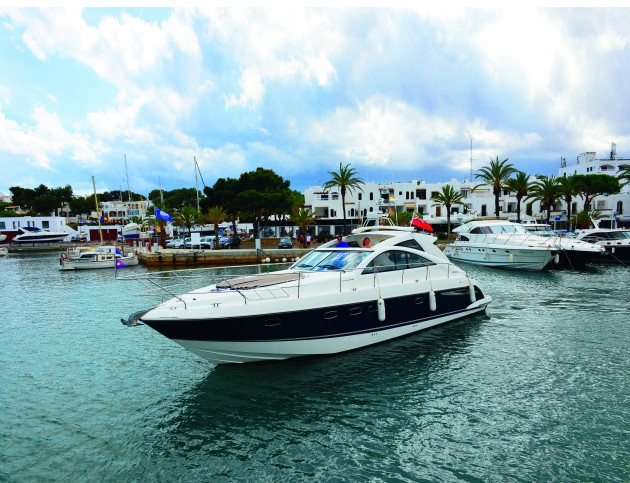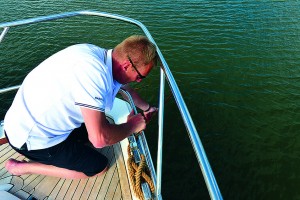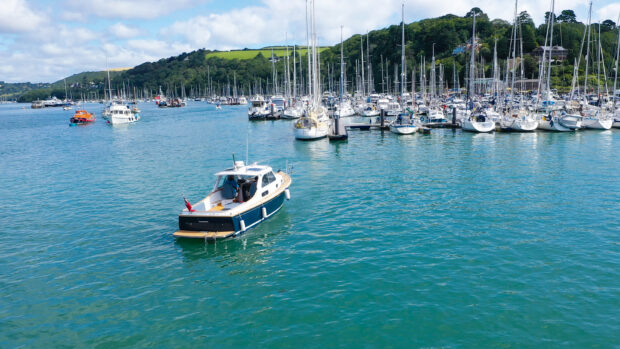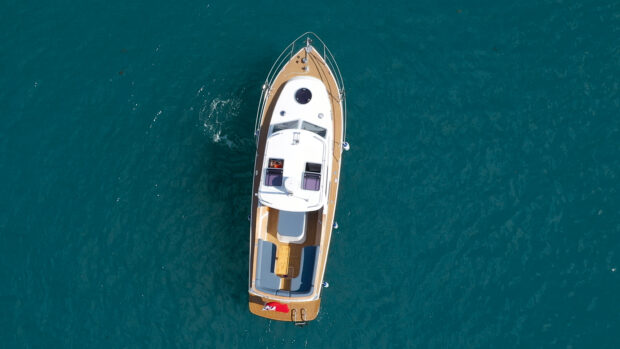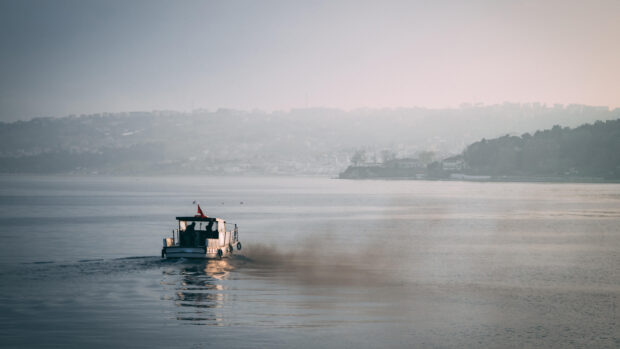This article from the Cruise Further, Cruise Safer series details windier conditions when berthing.
Many a great day out on the water has been spoilt by the stress of having to squeeze into a tricky marina berth in much windier conditions than when you left.
Wind is what motor boat skippers fear most in the marina because with all that superstructure above the water and very little below it, planing craft are more vulnerable to being blown off course than deep-keeled sailing yachts.
This is compounded by the unpredictability of the wind close to shore, particularly in the type of hot, mountainous regions you often encounter in the Mediterranean, where sudden katabatic winds rolling down the hills and out on to the sea can catch out the unwary. At least at sea the wind direction stays reasonably constant, whereas closer to land the wind often becomes gustier with sudden shifts in direction, especially around marina buildings.
The key, as ever, is careful planning of your intended manoeuvres to minimise the potential risk of things going wrong, then briefing the crew thoroughly before you actually get into a confined area.
Assessing the situation
The first step is to establish what the wind is doing and where it is pushing you – this gives you the downwind ‘Danger Zone’. Monitor it all the time so you know where you will end up if things do go wrong.
The trick is to keep the boat balanced on the wind for as long as possible so it’s in a neutral position. The best way to do this is to keep the wind on the stern.
Learn to control the bow without the thruster. Yes, it’s useful but you should aim to have good control with the engines alone so that the thruster is an aid rather than a primary control. Be wary of relying on a thruster to save the boat as it’s unlikely to be powerful enough to counter a strong wind.
Make sure you know your berth’s location and work out if the wind is helping or hindering, i.e. are you being swept on to or off the berth? If the wind is gusty and coming from an awkward direction, consider an alternative berth.
Watch carefully where the stern is. A motor boat’s pivot point means that if the wind blows the bow towards danger and you deliberately turn it away from it, the stern will move in the opposite direction and may move closer to the object you were trying to avoid.
Identify the correct starting position, ideally downwind of where you want to go so that you are moving into the berth against the wind. Most berthing attempts that go wrong are attempted from the wrong ‘start’ position.
Planning the manoeuvre
Now that you have assessed the situation, make the wind your friend. Try to use the wind to your advantage in the same way that you might use a tidal stream to ferry glide into a berth. This is where gusts get interesting as you need to be able to read the wind in advance of the gust that may catch you.
To do this, look for indicators around you, particularly upwind ones:
Marina flags or windsocks;
Ensigns or courtesy flags on neighbouring boats;
Yacht masts, which often have a wind arrow at the top;
Boats straining against their mooring lines can also show wind direction;
Ripples on the surface of the water – the darker and more vigorous the ripples the stronger the wind.
Your ability to read what is going on is what will make you a better boater, so reading the gusts and moving the boat early so that it’s closer to the safe, windward side before a gust hits you is an invaluable skill which you can practice every time you go out.
Briefing the crew
Now you’ve figured out your approach, you need a simple plan that your crew understand to minimise the stress.
Consider a drive by. It allows you to look at all the points, check your plan and point things out to your crew.
Make sure the crew know which line is the priority. This will usually be the one at the upwind end of the boat: wind on the bow, bow line first; wind on the stern, stern line first.
Do you want that line made off or returned to the boat?
Do you want the crew to work from the boat or to step off with a line?
If stepping off, then you need to give them a clear signal when.
Hand signals are good as voices get lost on a windy day.
Take your time and stay calm – pressured crew make mistakes.
Make sure the crew understand that it’s the skipper’s job to get the boat into the berth, theirs is to tie it up once in – heroic jumps can lead to injuries.
Last and most importantly, what is your Plan B and when will you abort Plan A, so that they don’t try to be extra helpful and make things worse.
Executing the plan
If possible use the wind as a brake to the boat’s momentum. This may mean going past your intended berth, turning round and approaching from the other direction so the wind and any gusts are not accelerating you into danger. Now follow the steps below.

With the wind on the starboard side it’s easier to start downwind and moter astern towards your berth before swinging your berth around as you approach your slot

As the bow swings round, the wind will start to act as a brake, preventing the nose from swinging too far to starboard and enabling you to back gently into the berth.

Keep fenders high as the wind may have closed the gap between the berths, meaning you need to lever it open

With the wind helping to push you in that stern fender is vital to stop you being blown back on to the quay

Pick up the windward lazy line first so that you can get the bow line on quickly and stop the boat being blown downwind

Now tighten up the bow lines to keep the stern away from the dock and add cross springs at the stern ti prevent the boat from twisting and to hold it steady
Next article: Getting out of difficulty – What to do when a berthing manoeuvre goes wrong – top tips that will save your blushes.
First published in Motor Boat & Yachting, issue November 2014.
Subscribe to the print version of MBY
Subscribe to a digital version of MBY





